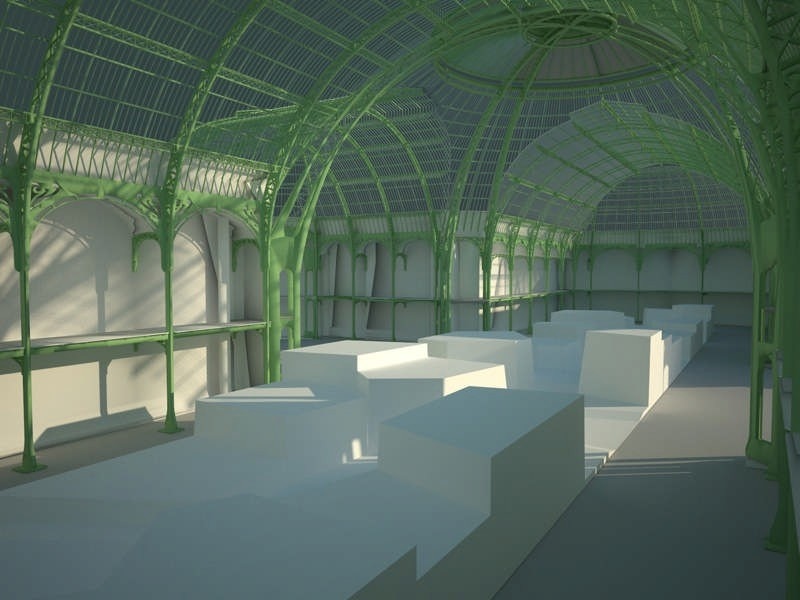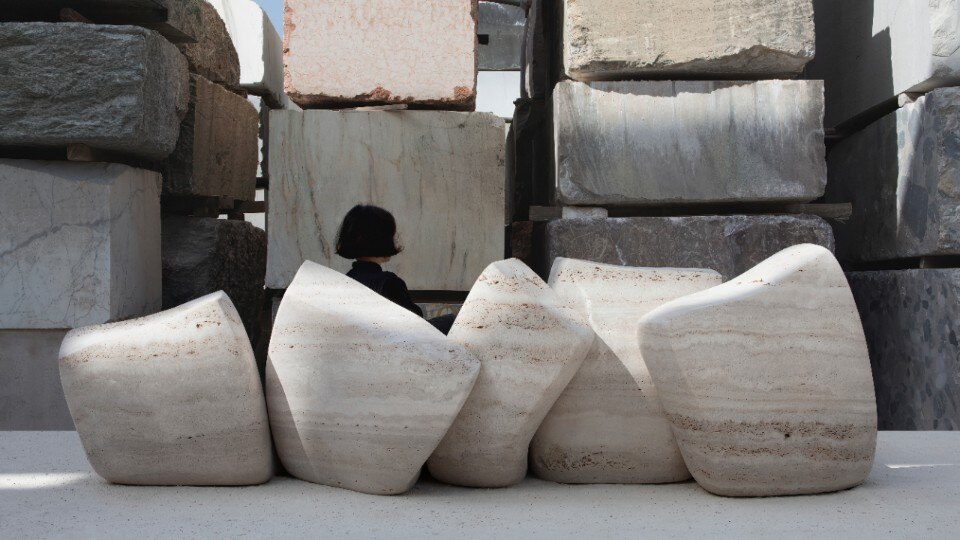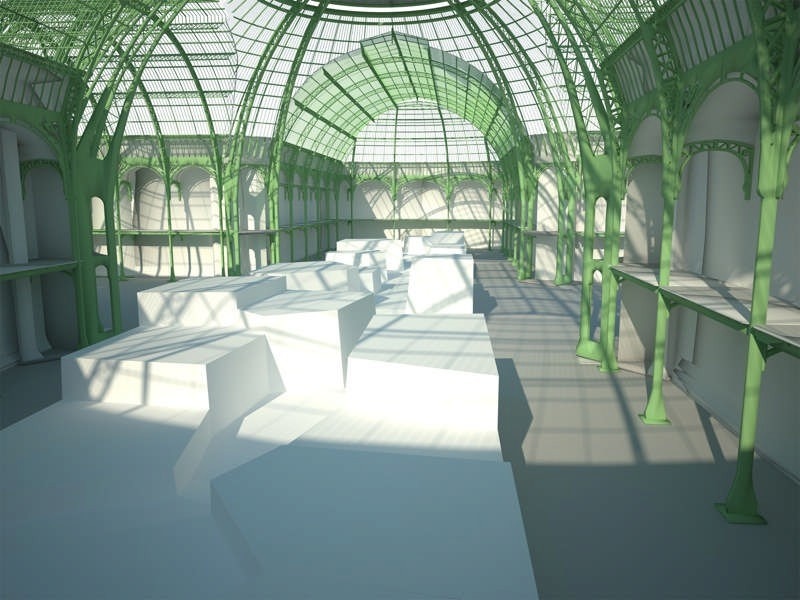"More than an architectural project, we are offering a geological process generated by the force of the artworks themselves. It is first a volume in the space, a certain quantity of substance, a certain rate of reverberation. Our project sets up a process: starting with a parallelogram measuring 160 m by 25 m and of a certain thickness, functioning like a paste which will begin to become deformed, to develop hollows, to swell in accordance with the play of forces which assume a geological language shaping the landscape with tectonic movements, deformations, pressures and depressions, folds. Yet there is no naturalism here; these are abstract forces which are at the origin of the movements and deformations shaping this territory, that of the artworks themselves. At first each artwork is given the same space and volume. And then, depending on their dimensions and the necessary distance between them and the observer, they will begin to push against each other in a movement similar to that of tectonic plates. Depending on their weight and the amount of light required, they will then deform the surface, create hollows, swell it, raise up heights. A white landscape appears, the "white cube" opens up, against which the shapes, textures and substances of the artworks will stand out and be showcased. It is therefore a reversed exhibition space proposed here; it is not the artwork which adapts to the architecture, but the architecture which folds and changes its shape to respond to the demands of the artwork. In this way the artworks are together in a play of mutual pushing and pulling, simultaneous and reciprocal balances, giving rise to the surging forth of the landscape." Philippe Rahm



Stone: Origins and Future in Architecture
On June 12 and 13, 2025, IUAV University of Venice will host "Stone is…," an international forum entirely dedicated to natural stone. Organized by PNA, this event aims to thoroughly explore the material's enduring value and sustainability, featuring insights from internationally renowned speakers.



